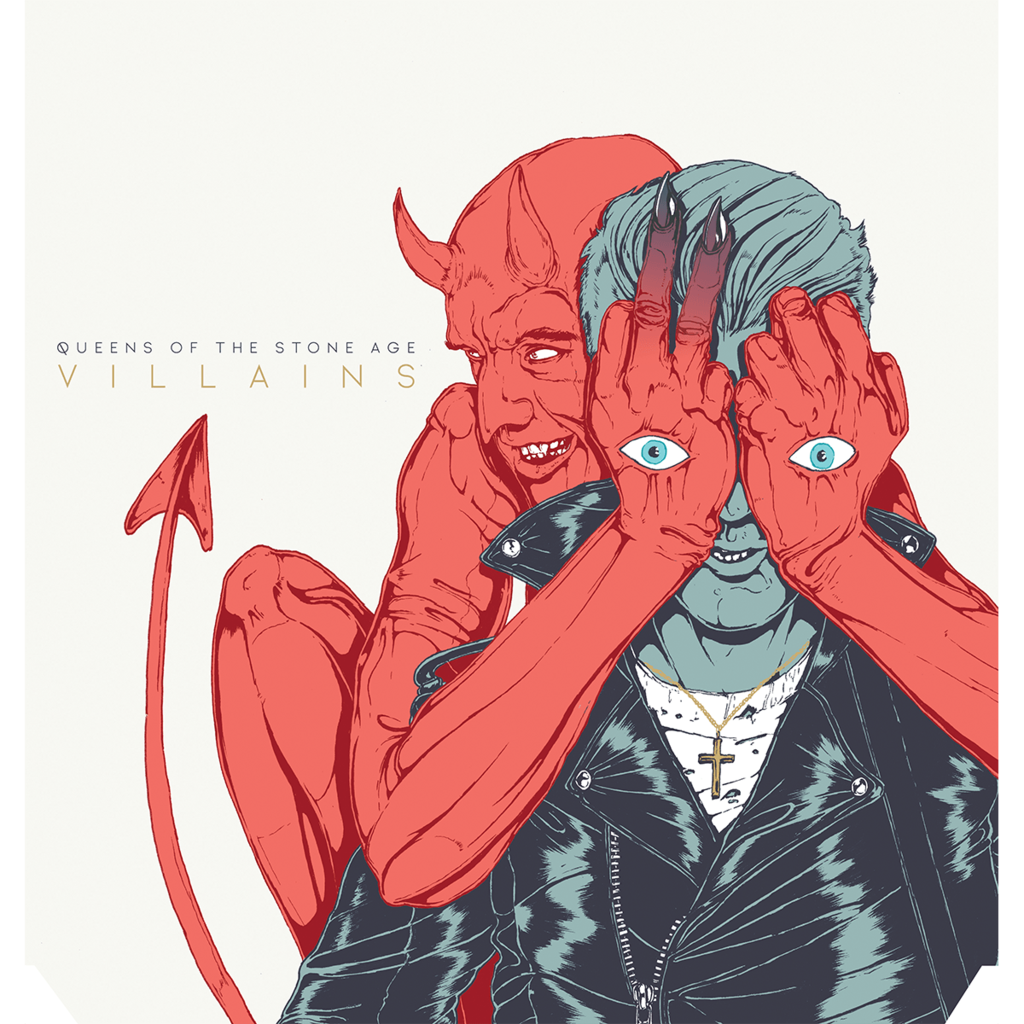‘Villains’ is Queens of the Stone Age’s seventh studio album. (Courtesy of Matador Records)
Emily Toomey
Connector Staff
Queens of The Stone Age just released their seventh studio album titled “Villains.” They have tried a different creation compared to their normal sound, including a much groovier vibe.
Known for their hypnotic guitar riffs, this album plays more into the catchy side of alternative rock that is not normally seen from them. They have teamed with producer Mark Ronson (“Uptown Funk”) to help reboot their sound.
The first single to be released, titled “The Way We Used to Do,” takes a melodramatic approach to their normal vocal style. Lead vocalist Josh Homme’s voice hits new low ranges, which created a more dark and grungy melody.
The beginning of the track starts off with an upbeat melody with heavy riffs entering. The lyrics give the song a sense of ease, starting off the pre-chorus with: “We run ‘till no one could find us. Girl, we outrun everyone.” The darkness of the song allows it to stand out as a more defining track on the album. The ending pre-chorus provides the listener with a sense of defiance: “Let nobody dare confine us. I’ll bury anyone who does.” This track is considered a re-vamp of their 2002 album “Songs for the Deaf.”
“Fortress,” one of the slower tracks on the album, operates as a more psychedelic track. The first 45 seconds of the song create a new world of sound, with its use of electronic reverb as a way to transfer the listener to space. This song has an eerie tone to it overall. Homme is lightly singing, “You wander through the darkness of wilderness behind your eyes. I know you’re afraid but you gotta move on,” without any instrument in the background at first. The simplicity of the song mixed with its darker roots create something totally new from them.
“The Evil Has Landed” is their second single, and stands out from the rest of their record. This track has a more disco vibe in the beginning, and the later riffs pick up to a heavier sound with metal influences. The darkness of the riffs contrasts the ease and warmth of the lyrics and overall tone of the track.
The beginning lyrics, “Close, come close,” nearly echo off of his mouth, creating the sound of an empty room. The second time around, those lyrics create a new effect with the heavy riffs played over the echo of his voice. A combination of psychedelic rock and breakdowns throughout the track leave the listener craving more from them.
Overall, this record is unlike anything Queens of the Stone Age have ever released before. They took on a more psychedelic approach to their sound in hopes of reaching new levels, and it paid off. The sound is unique in its own way, but still provides a sense of familiarity with its new wave and grunge influences. Though only nine songs complete the album, it still holds it ground as each song provides a different flavor than the last. For fans of “We Are Scientists” and “Bloc Party,” this album would certainly be appealing.

